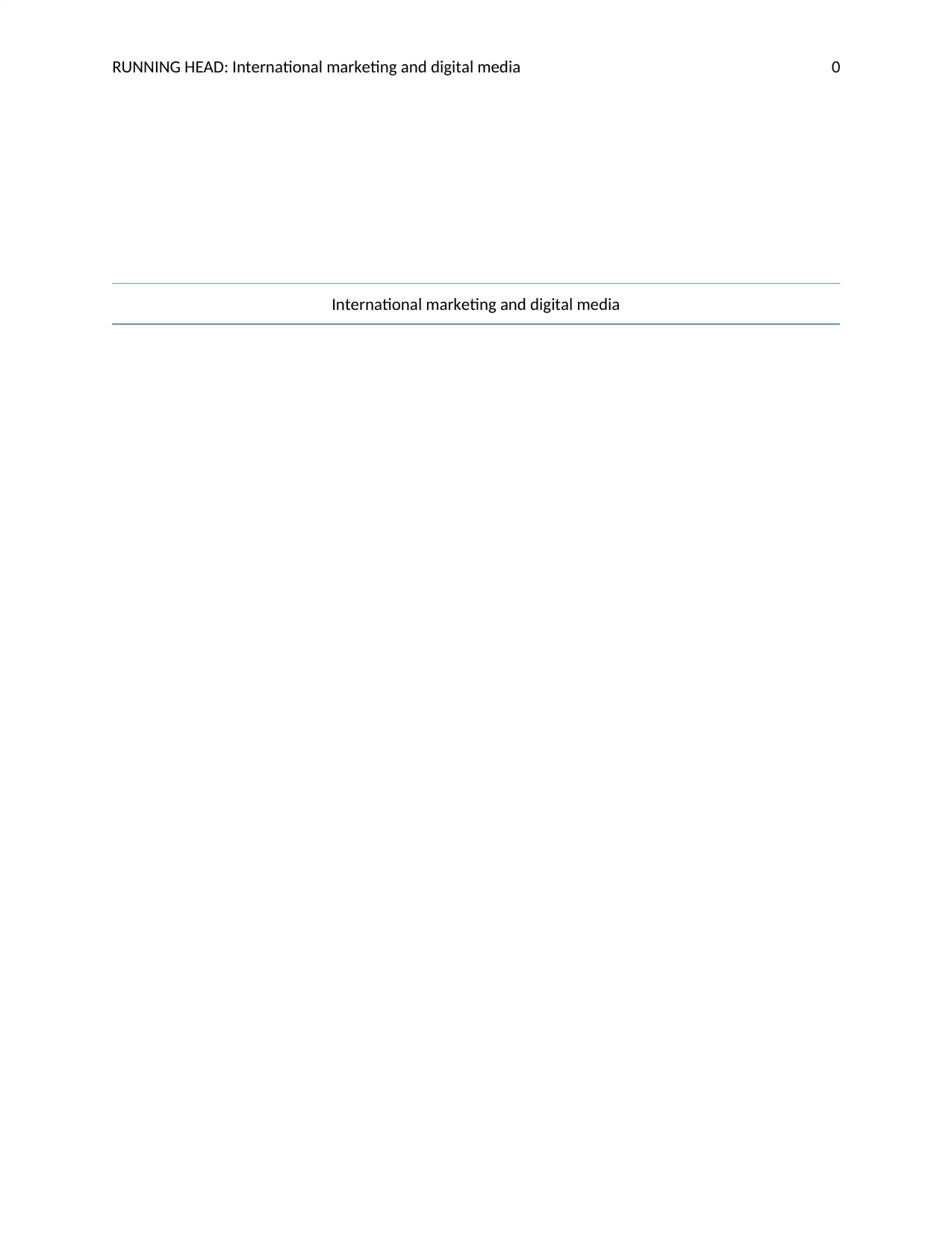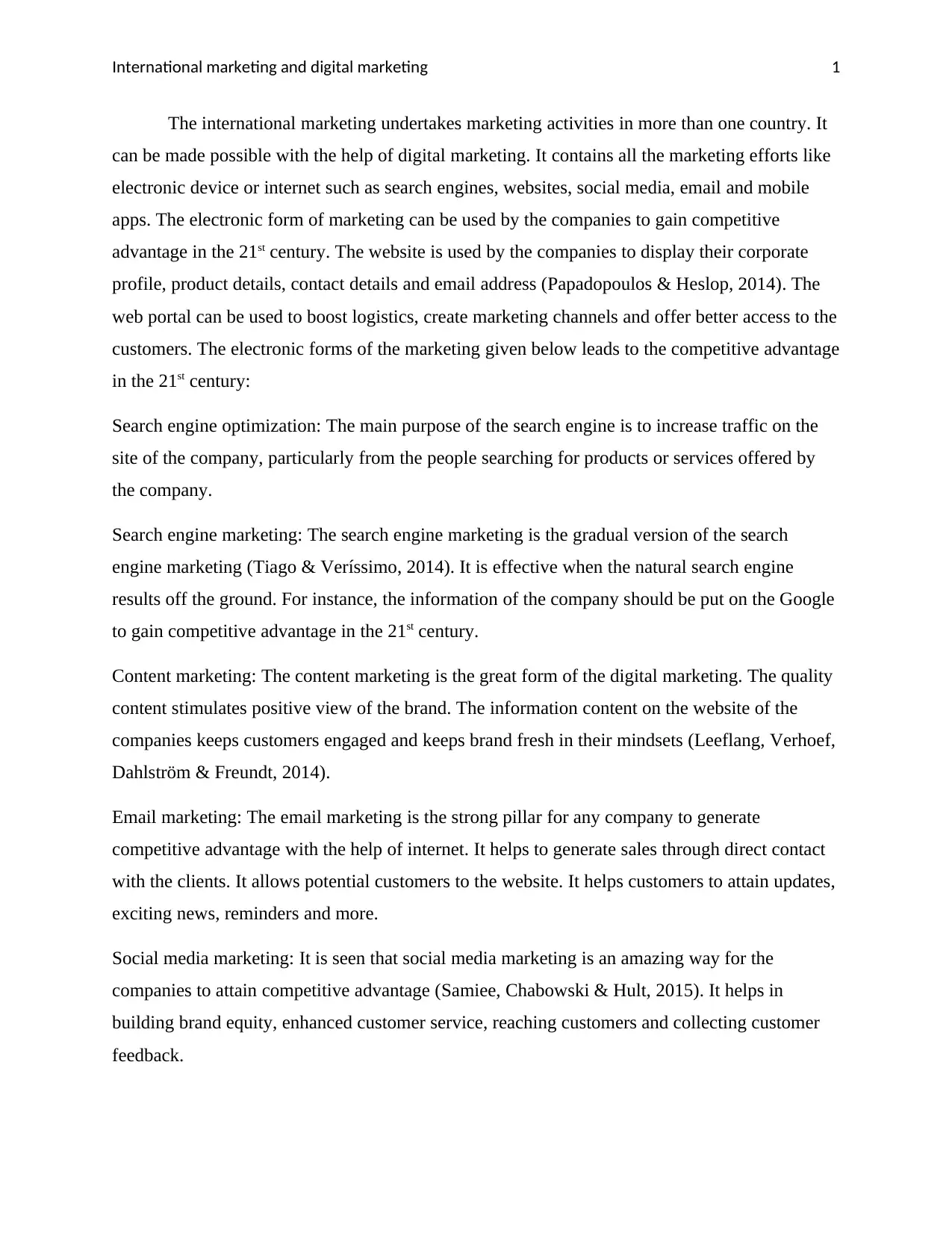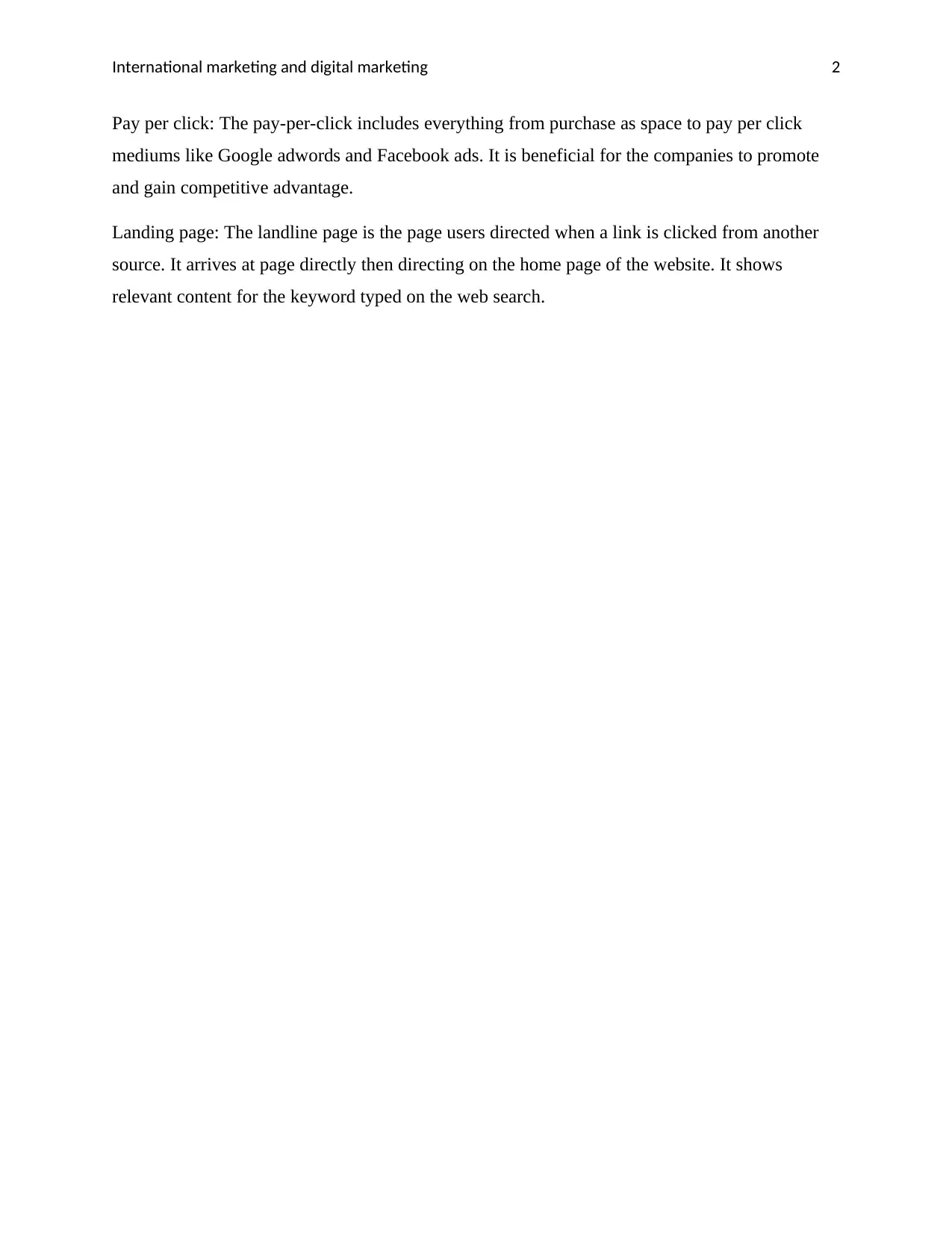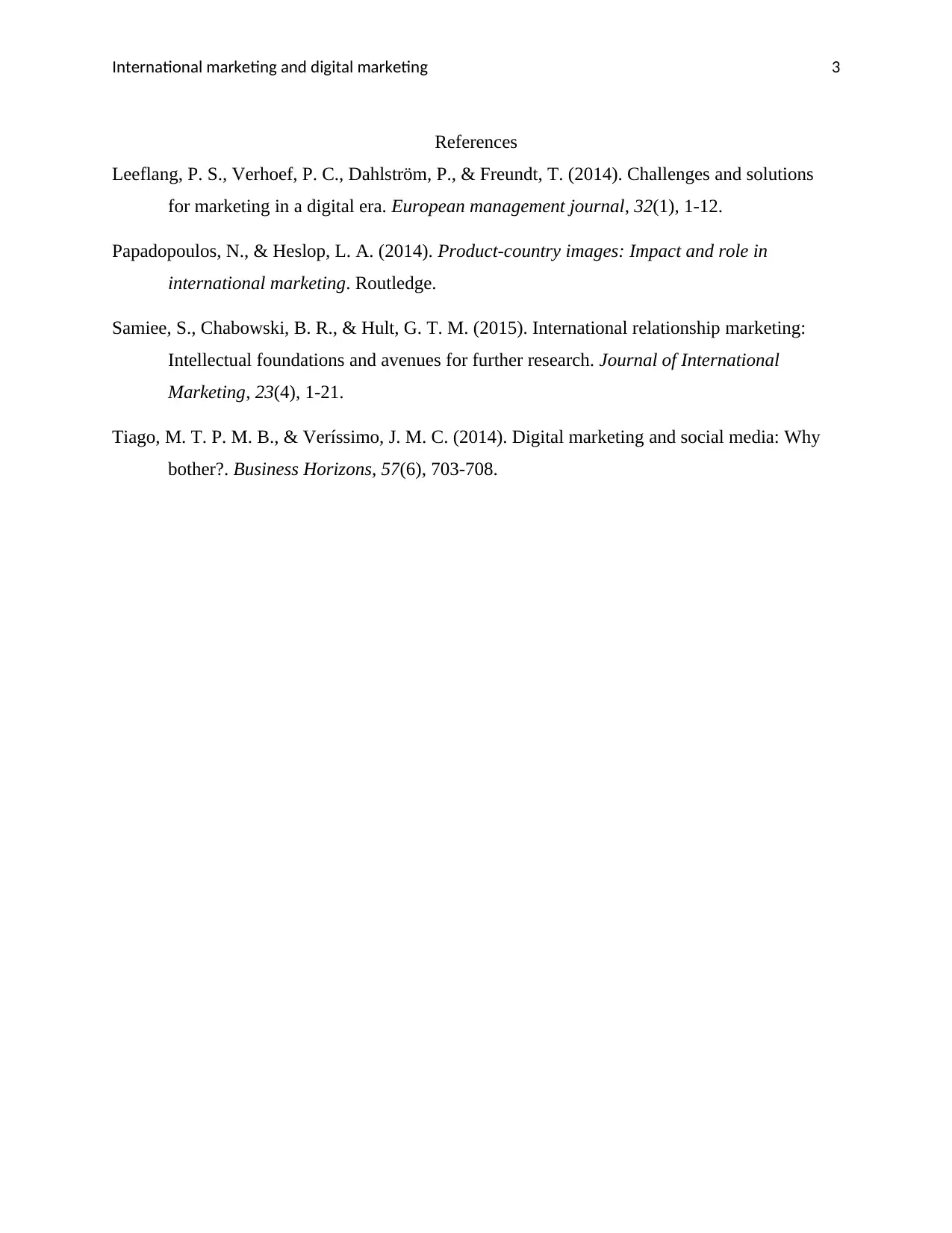Gaining Competitive Advantage: International Marketing & Digital Media
VerifiedAdded on 2023/05/30
|4
|666
|281
Essay
AI Summary
This essay explores the intersection of international marketing and digital media, emphasizing how companies can leverage digital tools to gain a competitive advantage in the 21st century. It discusses various electronic marketing forms, including search engine optimization (SEO), search engine marketing (SEM), content marketing, email marketing, social media marketing, pay-per-click (PPC) advertising, and landing pages. The essay highlights how each of these strategies contributes to building brand equity, enhancing customer service, reaching a wider audience, and collecting valuable customer feedback, ultimately leading to increased sales and market share in the global arena. Desklib offers similar solved assignments and past papers for students.
1 out of 4











![[object Object]](/_next/static/media/star-bottom.7253800d.svg)